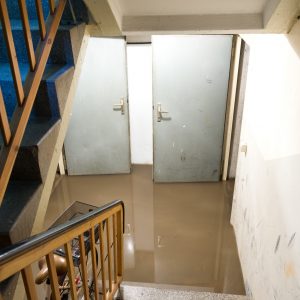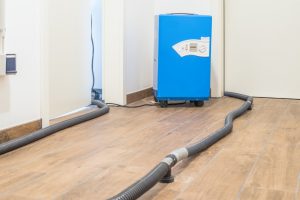The increase in rainfall in the spring and early summer has already been felt throughout the U.S. Some areas have been dealing with wet conditions for weeks while others have experienced flooding conditions due to excess rain.
If you live in one of these areas affected by rain, then you know that one of the most effective ways to protect your home from flooding is to have a sump pump installed. If your home does have a sump pump, then you also know the importance of maintaining the sump pump so that it is functional when needed.
Cause of Sump Pump Failures: Rain

Sump pump failure is one of the worst things that can happen if you live somewhere that experiences consistent rain. According to a study by the American Society of Home Inspectors, over 60 percent of American homes are located in an area in which they are likely to experience water damage from rain or underground wetness. This means that well over half of American homes need a sump pump to help stay dry in wet conditions.
Properly maintaining your sump pump is the best way to keep your home protected from flooding and excess moisture. Sump pump failures are more common than you may think which makes it important to know what to do if your sump pump stops working. This guide covers the main causes of sump pump failure and how to fix these problems.
How Does a Sump Pump Work?
In order to provide proper maintenance and respond to sump pump problems, you must understand how a sump pump works.
- To install a sump pump, a hole must be dug in the lowest level of your home which is typically the basement or a crawlspace. The hole serves as the pit where water fills up.
- When the water reaches a certain level, the pump kicks on and pushes the water out of the pit through the pipes.
- The pipe then guides the water outside the home to an area where it can drain safely. These pipes are fitted with a one-way valve that prevents the water from coming back inside.
How a Sump Pump is Activated
Most sump pumps are powered by the normal electricity in your home and plug into an outlet. They typically have a pressure sensor or float activator that causes the pump to run automatically when the water in the pit reaches a certain level. Pressure sensors work by detecting the pressure level of the water in the pit. When the pressure from the water exceeds the air pressure, the sensor activates the pump. Float activators consist of a ball attached to a moving arm that floats on top of the water level. When the water causes the ball to float above a certain level, the sump pump is activated.
The pump motor uses a fan-like impeller that spins and creates a centrifugal force that pushes the water through the pipe. This effect creates a low-pressure center that attracts the water in the pit before forcing it into the pipe.
It is important for all of these elements of a sump pump to be functional to prevent issues. If just one of these parts does not work, your sump pump will stop working.
Common Causes of Sump Pump Failure

You must become familiar with the most common sump pump problems so you can recognize and fix these problems before experiencing indoor flooding or water damage.
- Power failure: A power outage is the most common issue that leads to sump pump failure. This is especially likely during severe storms that can quickly knock out the power to your home. The best protection against power outages is to have a backup generator ready in case a power outage causes your sump pump to stop working. With a backup generator, you can get your sump pump running again quickly, but a generator will not help if there is a mechanical failure with the pump. You should also use a surge protection device for your sump pump because some components can be damaged by a power surge.
- Wrong size sump pump: It is important to make sure you have the right size sump pump and that it is properly installed. A sump pump that is too big must work harder which can shorten its lifespan and a small sump pump may not be able to handle the amount of water coming into the pit.
- Improper installation: A sump pump must be properly installed so that it will function. If any part of the sump pump is installed improperly, it can lead to serious issues. For example, if a check valve is not installed on the pipe that removes the water, water can flow back into the pipe and cause the impeller to disconnect from the motor shaft. This will prevent the sump pump from removing water. The discharge pipe must also have a hole drilled into it to relieve the air pressure, and this hole must be the right diameter. If you are not confident in your ability to properly install a sump pump, do not hesitate to call a professional.
- Switch issues: The most common mechanical problem with sump pumps is issues with the switch. This happens when the pump shifts in the pit and moves the float activator off the water. It is important for the float activator and the mechanical arm to be on the water so it can activate the switch when needed.
- Lack of maintenance: Regular maintenance is important for ensuring that your sump pump is functioning properly. Checking your sump pump on a regular basis will help you find and fix any issues before they lead to problems. It is generally recommended to run your sump pump every 2-3 months to ensure that there are no issues. The following tips will help you properly maintain the sump pump:
- If your sump pump has a backup pump, test it to make sure it is working.
- Watch the discharge pipe outside to make sure it is expelling the water.
- If the pump runs but doesn’t discharge any water, check the valve to make sure it is installed the right way and check the impeller to see if it has become detached from the motor shaft.
- Make sure the float is working properly.
- Clear the air hole in the discharge pipe.
- When the motor kicks on, listen for weird noises.
- Replace the battery every 2-3 years.
- Clogged discharge pipes: The discharge pipe must be clear of ice and debris to ensure that the water is discharged from the home. Check the pipe for debris and clear it when needed. Installing a special grated discharge line attachment to the discharge pipe close to the home will give the water somewhere to drain if there is an ice blockage near the end of the pipe.
- Product Defect: This is the least common cause for sump pump failure, but it is still possible. You should test your sump pump immediately after it is installed to check for possible defects.
Importance of a Working Sump Pump
A sump pump is the most important piece of equipment in your home when it comes to preventing in home flooding and water damage. Therefore, it is extremely important to understand how it works and the most common causes of sump pump failure so that you can quickly respond to these issues and get your sump pump back up and running. If you need additional help to install your sump pump or provide repairs if there is an issue, do not hesitate to call a professional for help.
Flood Cleanup After Sump Pump Failure
While sump pumps are very effective for preventing water damage in your home, there are no 100 percent guarantees when it comes to water damage. One of the above-mentioned issues can cause your sump pump to fail or your foundation could sprout a leak in a different part of your basement that allows water to seep in.
If you experience water damage in your home, you must call a water damage restoration professional right away. These professionals can properly extract excess water and moisture from your home and thoroughly dry the affected areas with advanced dehumidification equipment.
Restoration Contractors
Water damage restoration professionals are available 24/7 and will react right away to your first call. Each technician is also IICRC-certified and continues to undergo frequent training sessions to remain the most efficient and effective provider in the industry. In addition to responding immediately, they will arrive with all equipment to restore the affected area to its original condition.
For more questions about restoring your home after flood damage, don’t hesitate to give these experts a call.

